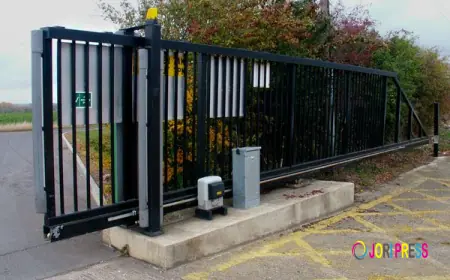Why Residential Insulation Is the First Step Toward Energy Efficiency

Trying to keep your home comfortable without seeing your energy bills skyrocket? It’s frustrating watching money literally leak out through walls and ceilings that aren’t properly insulated. The truth is, if energy efficiency feels like an uphill battle, missing or poor insulation is often the sneaky culprit behind it.
Before diving into fancy gadgets or complicated upgrades, the smart move starts with insulation. Getting the basics right saves energy, keeps your home cozy, and prevents headaches down the road. Here’s why residential insulation deserves top billing when chasing energy efficiency.
Insulation’s Direct Impact on Energy Savings
Energy efficiency starts with stopping heat from escaping or entering your home. Insulation is the barrier that slows down this heat transfer, reducing the load on heating and cooling systems. Without expert residential insulation services, the air you pay to heat or cool quickly disappears.
How Insulation Maintains Temperature Control
Insulation creates a thermal envelope around your home. It reduces heat flow through walls, attic, floors, and even windows when paired with the right treatments. This means rooms stay warmer in winter and cooler in summer, with fewer temperature swings.
Common insulation types for homes include fiberglass batts, spray foam, cellulose, and rigid foam boards. Each has its own strengths depending on the area of installation and local climate. Spray foam, for instance, seals gaps and cracks while insulating, offering double protection.
Fun fact: Nearly 50% of a home’s heating and cooling energy can be lost through uninsulated or poorly insulated attics and walls.
How Insulation Improves Indoor Comfort and Air Quality
Energy savings are great, but feeling comfortable and breathing clean air inside your home matters most.
Poor insulation leads to cold drafts, hot spots, and moisture issues that affect comfort. Gaps in insulation also let outdoor air, dust, and allergens sneak in, which can hurt indoor air quality.
The Role of Insulation in Moisture and Air Leak Control
When insulation fits snugly and pairs with vapor barriers, it helps keep moisture from building up inside walls. Moisture control prevents mold growth, which can damage building materials and trigger allergies or asthma.
Spray foam insulation is known for its air-sealing abilities, cutting down on drafts and preventing moisture from slipping in. This means healthier air and fewer cold spots.
Longevity and Home Protection Through Insulation
Insulation isn’t just a cost-saving measure; it’s a protective layer for your home’s structure.
Temperature fluctuations and moisture can damage wood framing, drywall, and other materials over time. Proper insulation minimizes these risks by maintaining stable conditions.
Extending the Life of Building Materials
Good insulation reduces expansion and contraction cycles in building components caused by temperature swings. It also limits condensation, which can lead to rot and corrosion.
Here’s a quick look at common residential insulation types and how they hold up over time:
Fun fact: Homes with inadequate insulation often face costly repairs 30-50% sooner than well-insulated ones.
Insulation’s Influence on Noise Reduction
Insulation can also help make your home a quieter, more peaceful place.
Certain insulation materials absorb sound waves, reducing noise from outside or between rooms. This is especially helpful in busy neighborhoods or multi-story homes where noise travels easily.
How Insulation Helps Block Noise
Denser materials like spray foam and cellulose offer better sound dampening than lighter options. This means fewer distractions and more restful indoor spaces.
Residential Insulation and Environmental Impact
Good insulation benefits not just your wallet but also the planet.
Homes are a significant source of energy consumption and carbon emissions. Using insulation that reduces energy waste lowers your carbon footprint.
Choosing Sustainable Insulation Options
Materials like cellulose often come from recycled paper products, making them eco-friendly choices. Durable insulation that lasts decades avoids the waste and emissions linked to frequent replacements.
Conclusion
Investing in proper insulation upfront saves money and stress in the long run. It’s the smart, practical move for any homeowner serious about making their space more efficient and livable. To ensure lasting results, consider working with expert spray foam insulation services that deliver both comfort and energy savings.
FAQs
What type of insulation works best for energy efficiency?
Closed-cell spray foam offers excellent thermal resistance and air sealing. Cellulose and fiberglass are solid options depending on the area and budget. The choice depends on your home’s specific needs.
How does insulation lower heating and cooling costs?
By reducing heat flow through walls and ceilings, insulation helps maintain a consistent indoor temperature. This means your HVAC system doesn’t have to run as much, cutting energy use.
Can insulation improve indoor air quality?
Yes. Insulation that seals gaps prevents outdoor pollutants and allergens from entering. Moisture control also reduces mold risk, improving air quality.
How long does residential insulation last?
Properly installed spray foam insulation can last over 40 years. Other types like fiberglass and cellulose typically last 20 to 30 years before needing replacement or upgrades.
Does insulation reduce noise inside the home?
Certain types, especially denser materials like spray foam and cellulose, absorb sound and reduce noise transmission, making interiors quieter and more comfortable.
Reviewer: With nearly a decade in the spray foam insulation field, William Harris reviewed this post and provided guidance that reflects both technical understanding and real-world marketing experience.
What's Your Reaction?
 Like
0
Like
0
 Dislike
0
Dislike
0
 Love
0
Love
0
 Funny
0
Funny
0
 Angry
0
Angry
0
 Sad
0
Sad
0
 Wow
0
Wow
0



















































